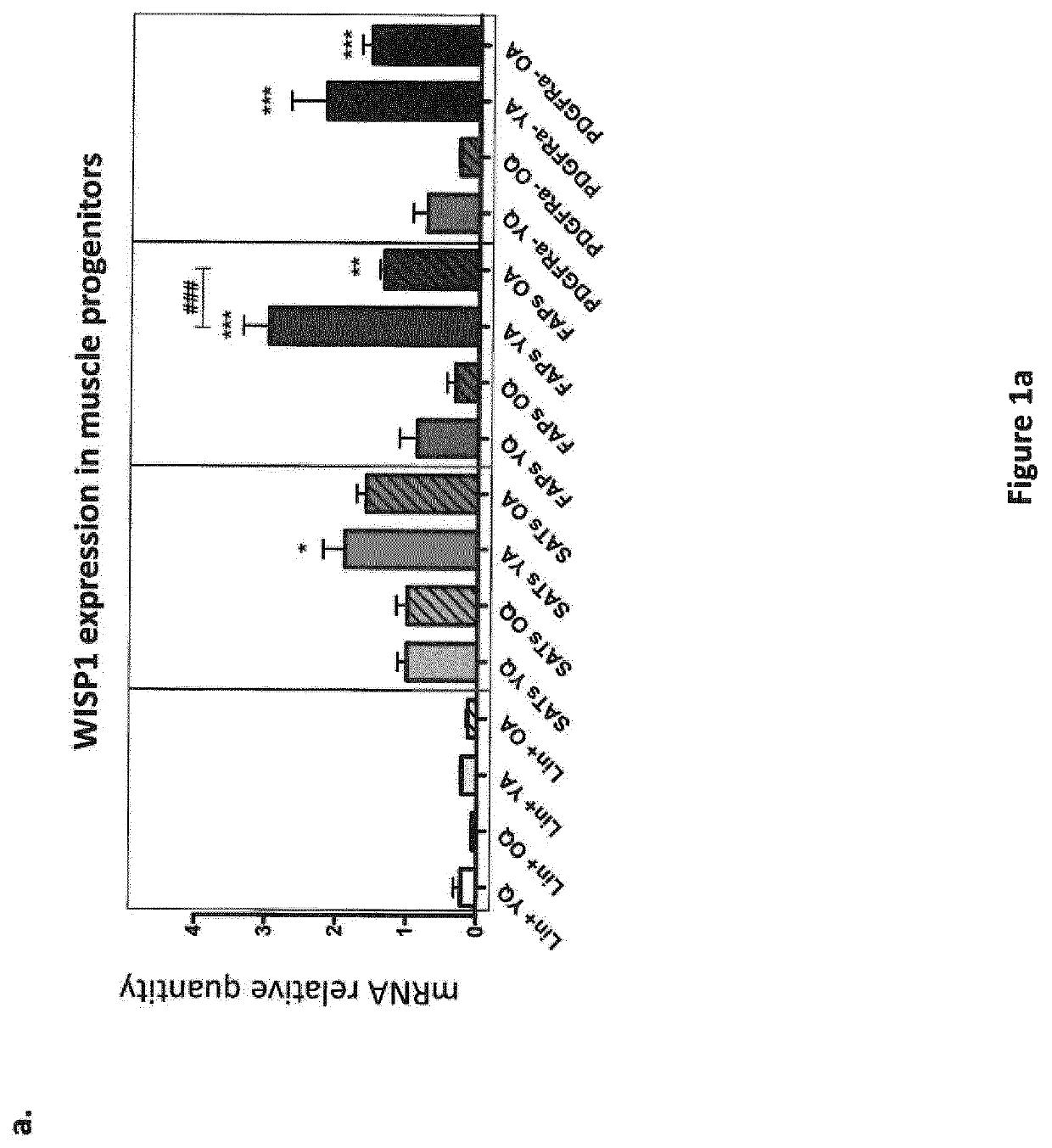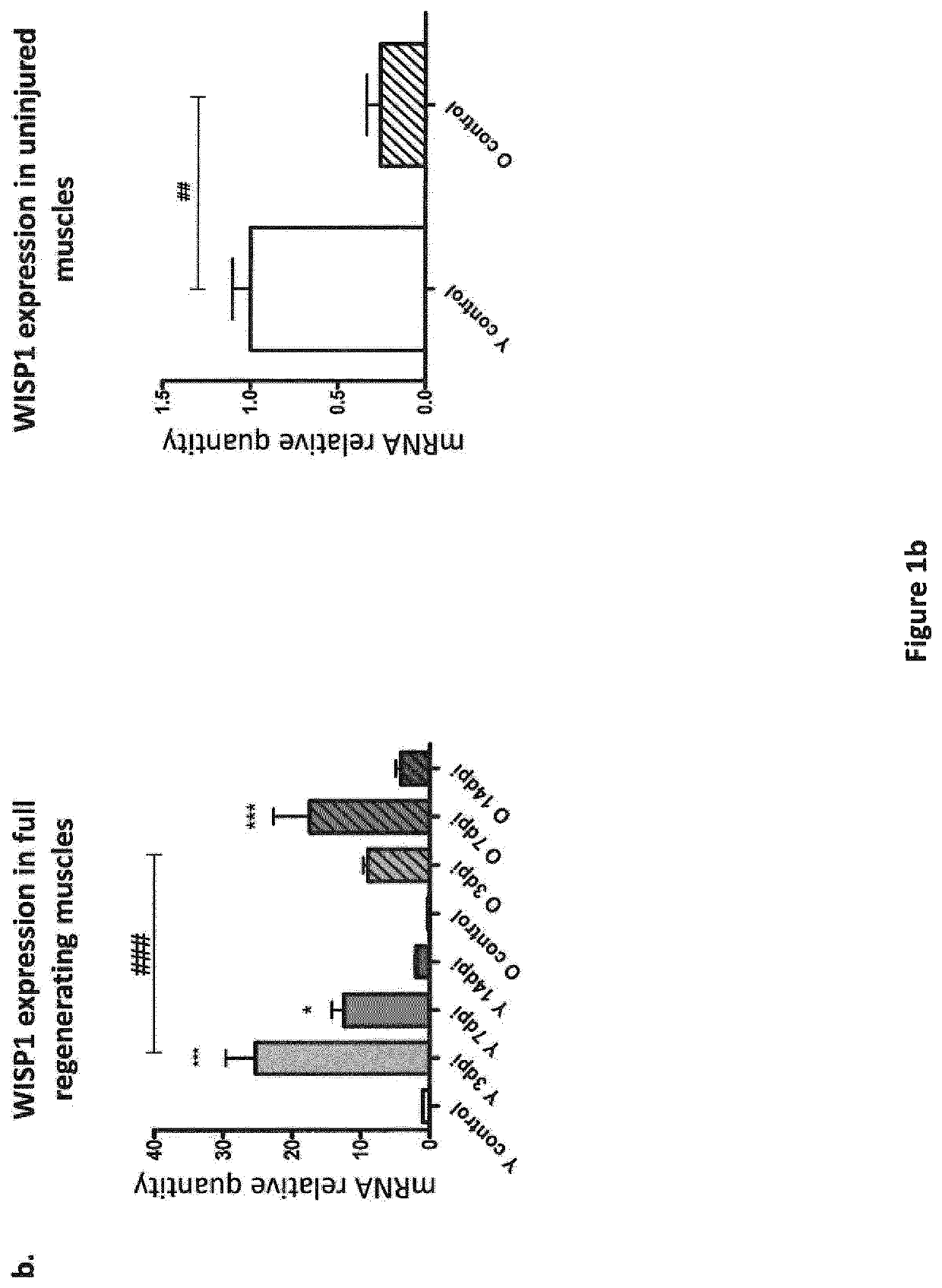Methods for treating sarcopenia and muscle injury
a sarcopenia and muscle injury technology, applied in the field of sarcopenia and muscle injury treatment, can solve the problems of poor patient compliance, poor balance, gait speed, and people losing their ability to live independently, so as to prevent or reduce the reduction of muscle mass, maintain or increase muscle mass, and prevent the effect of muscle mass reduction
- Summary
- Abstract
- Description
- Claims
- Application Information
AI Technical Summary
Benefits of technology
Problems solved by technology
Method used
Image
Examples
example 1
[0233]Materials and Methods
[0234]Mice
[0235]All mice were housed under standard conditions and allowed access to food and water ad libitum. The strain C57BL / 6JRj (Janvier) was used. Young mice were between 9-12 weeks old and aged mice were ≥20 months old.
[0236]Muscle regeneration was induced by intramuscular injections of 50 μL of 50% v / v glycerol into tibialis anterior (TA) muscles. Mice were sacrificed 3, 7, 14 or 21 days post injection (dpi) and regenerating TA muscles were analysed at the molecular level. For isolation of muscle progenitors, tibialis anterior, gastrocnemius and quadriceps muscles were intramuscularly injected with 50 μL, 50 μL and 100 μL of 50% v / v glycerol, respectively. Mice were sacrificed 3 days post injection, and muscles were processed for cell isolation by flow-cytometry. For in vivo WISP1 treatment, 1 mg / kg / day of mouse recombinant WISP1 protein was injected intra-peritoneally daily after muscle injury. Control mice were injected with the corresponding vo...
PUM
| Property | Measurement | Unit |
|---|---|---|
| concentration | aaaaa | aaaaa |
| mass | aaaaa | aaaaa |
| physical | aaaaa | aaaaa |
Abstract
Description
Claims
Application Information
 Login to View More
Login to View More - R&D
- Intellectual Property
- Life Sciences
- Materials
- Tech Scout
- Unparalleled Data Quality
- Higher Quality Content
- 60% Fewer Hallucinations
Browse by: Latest US Patents, China's latest patents, Technical Efficacy Thesaurus, Application Domain, Technology Topic, Popular Technical Reports.
© 2025 PatSnap. All rights reserved.Legal|Privacy policy|Modern Slavery Act Transparency Statement|Sitemap|About US| Contact US: help@patsnap.com



